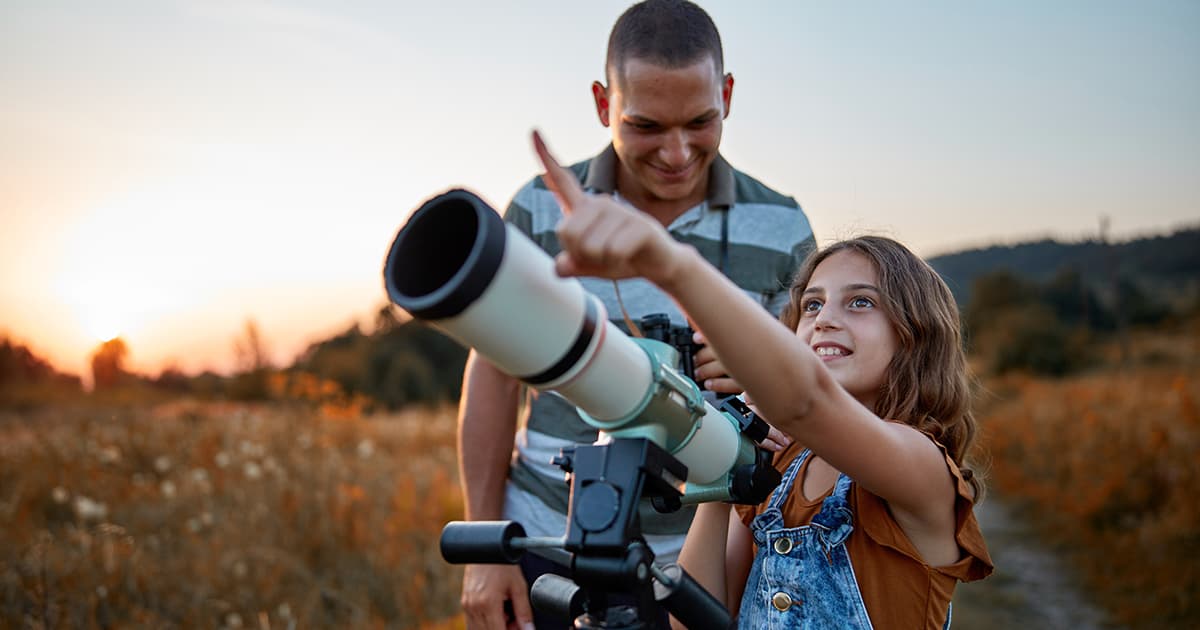A Guide to Summer Stargazing in Canada

From the majestic constellations to meteor showers, summer offers some of the best opportunities for stargazing across the Canadian provinces.
So, grab your telescope, find a cozy spot, and let's explore the wonders above.
Why summer is ideal for stargazing
The summer months, particularly July and August, are perfect for stargazing for several reasons. The nights are warm, allowing for extended periods of outdoor observation without the need for heavy layers.
With the sun setting later, there's a unique blend of twilight and night that offers beautiful transitions and opportunities to spot both planets and stars.
The summer sky hosts some of the most recognizable and fascinating constellations, making it a great time for both beginners and experienced stargazers to explore.
The stars and constellations of summer
- The Summer Triangle: The Summer Triangle is an astronomical asterism formed by three bright stars from three different constellations: Vega in Lyra, Deneb in Cygnus, and Altair in Aquila. This prominent triangle is easily identifiable and serves as a great starting point for finding other celestial objects.
- Vega: The fifth brightest star in the night sky and the brightest in the constellation Lyra.
- Deneb: Located in the tail of Cygnus the Swan, it is one of the largest known white stars.
- Altair: The brightest star in Aquila the Eagle, known for its rapid rotation.
- Scorpius and Sagittarius: To the south, you’ll find the constellations of Scorpius and Sagittarius. Scorpius is one of the few constellations that actually resembles its namesake, the scorpion. Look for Antares, a red supergiant star often referred to as the "heart of the scorpion."
Sagittarius is home to the Teapot asterism, whose "spout" points towards the center of our galaxy, the Milky Way. This area of the sky is rich with star clusters and nebulae, providing stunning views through binoculars or a telescope. - The Milky Way: During summer, the Milky Way stretches across the sky from the southern to the northeastern horizon. This glowing band of light is the combined light of billions of stars in our galaxy. It's best seen away from city lights, so consider heading to a more rural location for optimal viewing.
The ‘dog days’ of summer
The term "Dog Days of Summer" has an interesting astronomical origin. It refers to the period from early July to mid-August when the Sun occupies the same region of the sky as Sirius, the brightest star visible from Earth. Sirius is part of the constellation Canis Major, the Greater Dog, hence the name.
In ancient times, the Dog Days were believed to be a time of heat, drought, and discomfort. While modern science has debunked these notions, the name persists, and it adds a bit of historical flavor to our summer stargazing adventures.
Special events: meteor showers
Summer is also a fantastic time for meteor showers. The Perseid meteor shower, peaking in mid-August, is one of the most spectacular and reliable showers of the year. Under dark skies, you can see up to 60 meteors per hour. The meteors are remnants of the comet Swift-Tuttle and can produce bright, fast streaks across the sky.
Tips for successful stargazing
- Find a dark sky location: Light pollution can significantly diminish your stargazing experience. Seek out parks, rural areas, or designated dark-sky preserves for the best views.
- Check the weather: Clear skies are essential for stargazing. Use weather apps or websites to ensure optimal conditions before you head out.
- Bring the right gear: While the naked eye can reveal much, binoculars or a telescope can enhance your experience. A star map or stargazing app can also help you navigate the night sky.
- Give your eyes time to adjust: It takes about 20-30 minutes for your eyes to fully adjust to the dark. Avoid looking at bright screens or lights during this time.
- Stay comfortable: Bring a blanket or chair, dress in layers, and pack some snacks and water. Comfort is key to enjoying long nights under the stars.
Best stargazing spots in Canada
Canada offers numerous prime locations for stargazing, thanks to its vast landscapes and relatively low light pollution. Here are a few top spots:
- Jasper National Park, Alberta: A designated dark-sky preserve with stunning views of the Milky Way.
- Keji Dark Sky Preserve, Nova Scotia: Known for its exceptionally dark skies and organized stargazing events.
- Mont-Mégantic National Park, Quebec: Home to the ASTROLab and an international dark-sky preserve.
- Grasslands National Park, Saskatchewan: Offers wide-open skies perfect for observing constellations and meteor showers.
Whether you're a novice or a seasoned astronomer, summer in Canada provides an excellent opportunity to connect with the night sky. The warmth of the season, combined with the breathtaking celestial displays, makes it a magical time to explore the universe from your own backyard or a remote dark sky preserve.
So, gather your stargazing gear, find a perfect spot, and let the wonders of the cosmos unfold above you. Happy stargazing!



